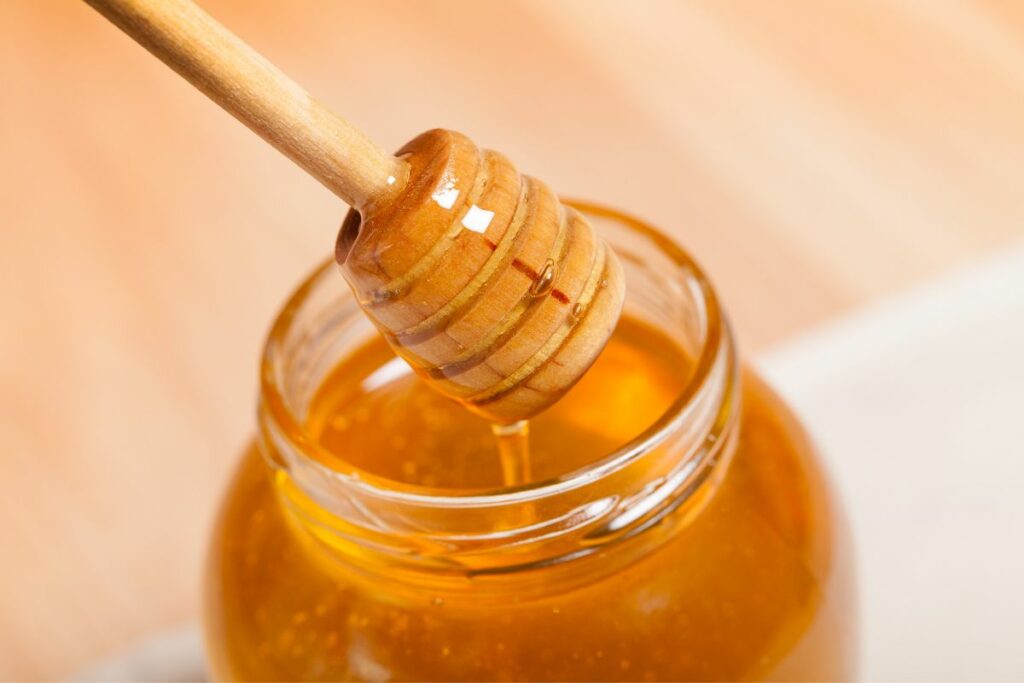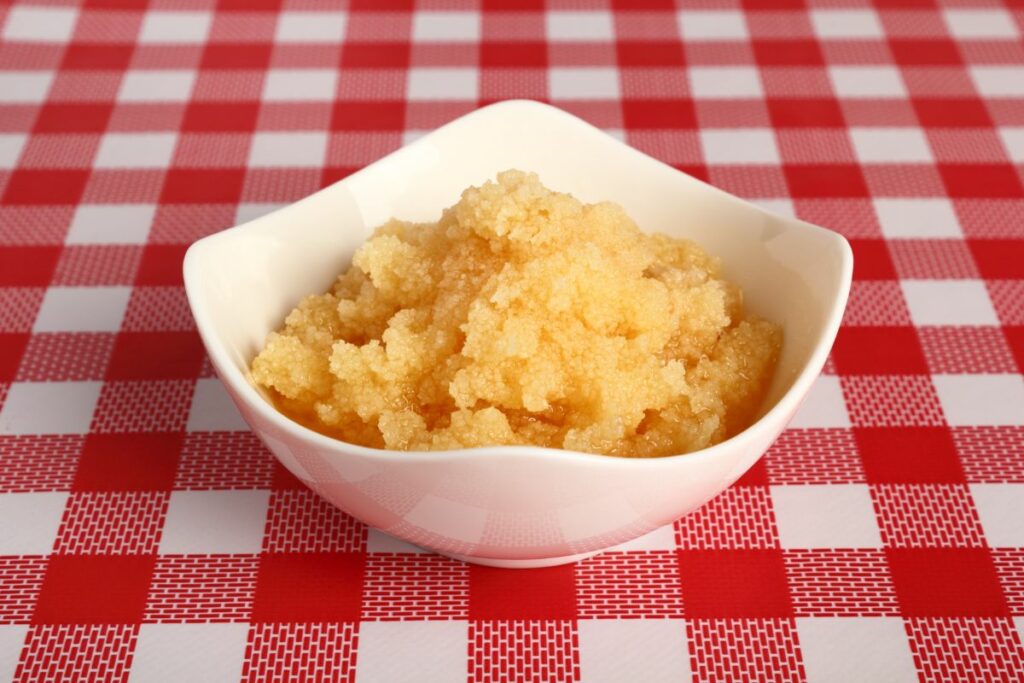The great thing about honey is that you can use it for so many things, whether it is to sweeten up your tea, add to your curry or use it to drizzle over your favorite dessert. But what happens when your honey starts to crystallize over months? Can you still eat it?

Well, the good news is that yes, you can. Honey is made up of mainly sugar with only a small amount of water. The fact that it has such little moisture inside means that it is not a great environment for bacteria to thrive.
So how long does honey last before you have to throw it out? How can you store honey properly? Can honey grow mold? We’ll answer all these questions and more with our guide to the shelf-life of honey as well as some other properties.
What Is Honey Used For?
Honey is often considered a healthy alternative to sugar, as it comes from natural sources. There are many different types of honey, most of which are specific to the hive that they come from.
The darker the color of honey, then the stronger the flavor. Here are some of the varieties of honey you can buy:
- Manuka Honey
- Alfalfa Honey
- Eucalyptus Honey
- Acacia Honey
- Buckwheat Honey
- Clover Honey
- Sage Honey
- Lavender Honey
- Rosemary Honey
- Jamun Honey
You can use honey to sweeten almost anything, from desserts to teas to curries. Most of the time, you will only need to add a teaspoon of honey, as it is very concentrated.
Make sure you stir in your honey well so that it does not clump together in your recipe.
Honey also contains a lot of antibacterial properties, which can help you fight off illnesses and infections. Because this food is mainly sugar, it does not contain that many nutrients.
You should only consume honey in moderate doses.
Can Your Honey Go Bad?
In short: no. The fact that honey contains around 18% of water means that it isn’t the most hospitable environment for bacteria to spread. The fact that honey is so dense also means that bacteria will have a hard time getting through and spreading.
However, if you do not store your honey properly, then it can grow mold. If you notice green patches developing on your honey, then you should throw them out. You should also smell your honey.
If it smells bad, then it has probably fermented, and you’ll need to throw it away too.
If you are buying honey from the store, you might see that it has an expiration date. This is often a legal requirement, informing the customer how long the honey has been on the shelf. However, if the honey is properly sealed, it can last a few years.
Honey also has a very high acidic pH level, which is also an impediment to mycobacterial growth. But what happens if your honey has crystallized? Does this mean that it is bad to eat?
What To Do If Honey Crystallizes

If you leave honey for a few weeks, it will start to crystallize. This will usually be indicated by whiteness that develops around the outside. This is because the honey has separated from the water and started to form crystals.
This does not mean that it cannot be eaten, it just means that it will be slightly harder to consume. If you want it to return to some semblance of its original liquid form, then you will have to immerse it in warm water for a few minutes.
You’ll need to make sure that the water isn’t boiling, as this will kill a lot of the goodies that you might find in honey such as healthy enzymes and yeast.
What Is The Best Way To Store Honey Properly?
There are a few methods that you should follow to store honey properly. Make sure that you abide by these simple practices:
Make Sure Your Honey Is Airtight
Closing your honey off from harmful bacteria is one of the surefire methods of keeping it fresh. It will also help you to retain a lot of the moisture that is often lost if you do not keep your honey airtight.
Keep Your Honey Cool And Dry
You should make sure that you don’t refrigerate honey, as this will kill some of the healthy enzymes and will cause them to crystallize. As we have mentioned above, this is not a bad thing, but it will make it a lot more difficult to use.
Ideally, your honey should be stored at room temperature in your cupboard where it is cool and dry. Make sure that your honey does not overheat, as this will also kill some of the healthy enzymes that it contains.
Don’t Use Dirty Spoons
Make sure that you are not cross-contaminating your honey by using the same spoon for it and other substances. By transferring the same spoon, you are facilitating the spread of harmful bacteria and increasing the chances of mold growth.
The lid of your honey jar should be screwed on tightly once you have used it. This will prevent your honey from becoming oxygenated, which is when bacteria get through to it.
You should not add any water to your honey if it dries out. Instead, you should heat your honey at a low temperature.
What Recipes Include Honey?
There are many recipes that incorporate honey, here are just a few of them:
- Honey Orange Poached Plums – This is a very simple recipe that will only take 15 minutes to prep. All you need to do is simmer some ripe plums in water and honey until they are cooked without going mushy.
- Honey, Parsnip and Carrot Cake – This is a very light carrot cake that utilizes honey and coconut to create a complex dessert.
Conclusion
We hope that our guide to honey has given you a better understanding of how it changes over time and how you can store it properly so it stays fresh and liquid for as long as possible.
- How To Reheat A Cheesesteak - November 5, 2023
- What Are Three Must Have Kitchen Knives? - September 22, 2023
- How To Protect Edges Of Pie Crust - June 15, 2023








